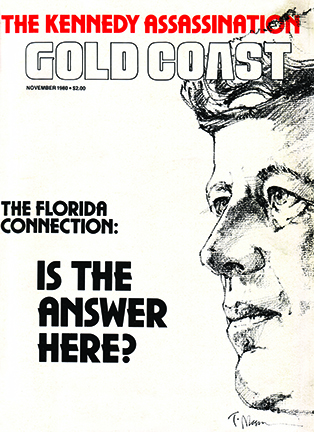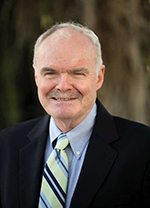The late President Bush—Were his connections buried with him?

Judging by the media tributes that accompanied the death of President George H.W. Bush in December, we buried a near saint. Perhaps he was, compared to some of the figures who succeeded him in the Oval Office, but there was also a side to the senior Bush that received almost no mention in his many obituaries.
An exception was Tim Weiner, writing in The Washington Post, who hinted at what some researchers have long suspected—that Bush’s connections to the American intelligence community went far beyond his brief term as CIA director in the 1970s. Wrote Weiner: “He was the only president who ever ran the agency and the last president who truly believed in its Cold War code: Admit nothing, deny everything.”
That seemed like an odd comment, for the senior Bush served as CIA director for just a year. That is a puzzling short time to develop such an intense commitment to the agency. That is, unless Weiner, a Pulitzer Prize winner and authority on the FBI and intelligence operations, knew that the ex-president may have been a CIA asset long before he took the top job. President Bush appears to have been connected to our intelligence apparatus at crucial and controversial times in its history. There was even a book written about his clandestine past. It contradicts the portrait of Bush as an example of a kinder, gentler political era.
It goes back to 1953 before Bush became politically active. He formed Zapata Oil with a partner who had recently resigned from the CIA. Oddly enough, that partner later returned to the CIA during the period of anti-Castro activity in the 1960s. Researchers have discovered documents indicating a subsidiary of Zapata Oil used offshore drilling facilities in the Caribbean as a listening post to monitor Cuban activities. Zapata Oil may have been a legitimate oil exploration company, but it also appears to have been a CIA front. More than a few companies active in Latin America were.
Here’s where it gets interesting. Declassified government files led to the discovery in July 1988 that on Nov. 23, 1963—the day after President Kennedy was assassinated—“George Bush of the CIA” was given an oral briefing by the FBI. Now, what was that all about? When asked at the time, Bush first joked it off. Then the CIA suggested it was a different George Bush. There was another George Bush in the CIA at the time, but he was a low-level analyst and signed an affidavit saying there was no way he ever had an FBI briefing. President Bush’s office said it would not dignify the report with further comment, and to the best of our knowledge never made one these last 30 years. Admit nothing. Deny everything.
This snippet of history interests us because of Gold Coast magazine’s long interest in the Kennedy assassination, and the fact that our former partner, Gaeton Fonzi, has gone down in history as the author of one of the most important books on the subject. It was a book that began as two long articles in our magazine in 1979. “The Last Investigation” was the result of three frustrating years Fonzi spent as a Florida-based investigator for two government committees that reopened the investigation into Kennedy’s murder in the mid-1970s.
Fonzi was initially hired by Pennsylvania Sen. Richard Schweiker, who recalled articles Fonzi had written in the 1960s for Philadelphia Magazine. One of them was an interview with Arlen Specter, the man who came up with the “magic” bullet theory to show how a lone gunman could have killed the president. Specter astounded Fonzi by stumbling in trying to explain his own theory. By 1975, Schweiker, having studied Lee Harvey Oswald’s strange defection to Russia and mysterious return, was convinced that the accused assassin had “the fingerprints of intelligence all over him.” He also thought a close look at anti-Castro figures operating in South Florida could be productive.
It sure was. Fonzi discovered that a prominent Cuban anti-Castro leader in Miami had seen his main CIA contact in the company of Oswald in Dallas just months before the assassination. It reinforced what others, including Sen. Schweiker, had suspected—that rather than being “a lone nut,” Oswald was a CIA operative who had been set up. A “useful idiot” to use a favorite CIA phrase. By then Fonzi was working for a second congressional committee, the House Select Committee on Assassinations.
He was excited in 1976 when Richard Sprague, a brilliant prosecutor who Fonzi knew well from Philadelphia, was hired by Schweiker to head the committee. Fonzi thought if anybody could solve this crime, it was Sprague. Fonzi was anxious to follow up on his Oswald CIA connection. But Sprague’s time in Washington was short. Sprague was literally forced out of his job after some indiscretions in his past were publicized way out of proportion. It turned out Schweiker’s enthusiasm for solving the Kennedy assassination was not shared by other government officials. When congressmen on the committee, who now appear to have been CIA friendly, threatened to shut down the whole investigation because of Sprague, he resigned.
He later said his problems in Washington began when he refused to sign an oath of secrecy requested by the CIA. “My problems in Washington began when I knocked on the door marked CIA,” Sprague said. His replacement was G. Robert Blakey, a well-intentioned man with impressive credentials (Notre Dame law professor) but one who did not believe the CIA would lie to him or his committee. He preferred to concentrate on organized crime figures as possible assassins, and there were some mob connections to be explored. He later regretted his naiveté. The bottom line was that the HSCA investigation, rather than being thorough and conclusive, was rushed under budget pressures and vague in its final report. It said there was evidence of a conspiracy, but gave you multiple-choice options.
Fonzi, who had constant frustration trying to work with shadowy CIA figures in South Florida, was depressed. His magazine articles were in effect a dissenting opinion. We might add that we saw all this up close; Fonzi sometimes worked out of the Gold Coast magazine office (he was still contributing occasionally to the magazine) and sometimes used our phones. We never billed the government.
What does all this have to do with the late President Bush? Timing. Bush became CIA director in January 1976. Richard Sprague was hired to run the JFK investigation in October 1976. Although Sprague did not resign until March 1977, his problems with the CIA began soon after he was hired, and came to a head in early January 1977 when Bush was still CIA director. The obvious question: what did President Bush know about the CIA’s pressure to oust Sprague? As CIA boss, he certainly should have known something. And did he have anything to do with a decision, which turned out to have wrecked the last serious attempt to solve the murder of a president?
When Fonzi wrote his magazine articles in 1979, the strange FBI memo naming George Bush in connection with the Kennedy assassination briefing was not known. Fonzi did not make any reference to the above timing, but when his articles became a book in 1993, he included the mysterious memo. He did not, however, link Sprague’s downfall to the timing of Bush being CIA director.
By then Bush was president, and questions about the Kennedy assassination had greatly intensified. Jim Garrison’s book that inspired Oliver Stone’s 1991 movie “JFK” had been published. We asked Fonzi at the time why Bush would have denied the 1963 FBI memo, even going to the extent of the CIA saying it was a different man with the same name. Fonzi replied that in 1988 Bush was running for president, and any suggestion of a relationship to the Kennedy assassination, no matter how remote, could have been devastating to his election chances.
Fonzi died in 2012. If he were alive today, we think he would reflect on the Richard Sprague episode in 1977 with great interest. What, if anything, President Bush’s role was in that event may never be known. He took that information with him.
Admit nothing, deny everything. To death do us part.
***
As this article was being prepared, there came an announcement that members of the Kennedy and Martin Luther King families were among those who signed a petition asking Congress to reopen the investigations of the murders of President Kennedy, his brother Robert, Martin Luther King Jr. and Malcolm X. The list of those signing the petition is a veritable who’s who of prominent figures (those still alive) that have long challenged the official government versions of the JFK assassination. Notable among them: G. Robert Blakey, now in his 80s, is the same man who thought he could trust the CIA when he took over as head of the House Select Committee on Assassinations in 1977, and whose committee issued a report saying JFK’s death was a conspiracy but left us guessing by whom. Stay tuned.
